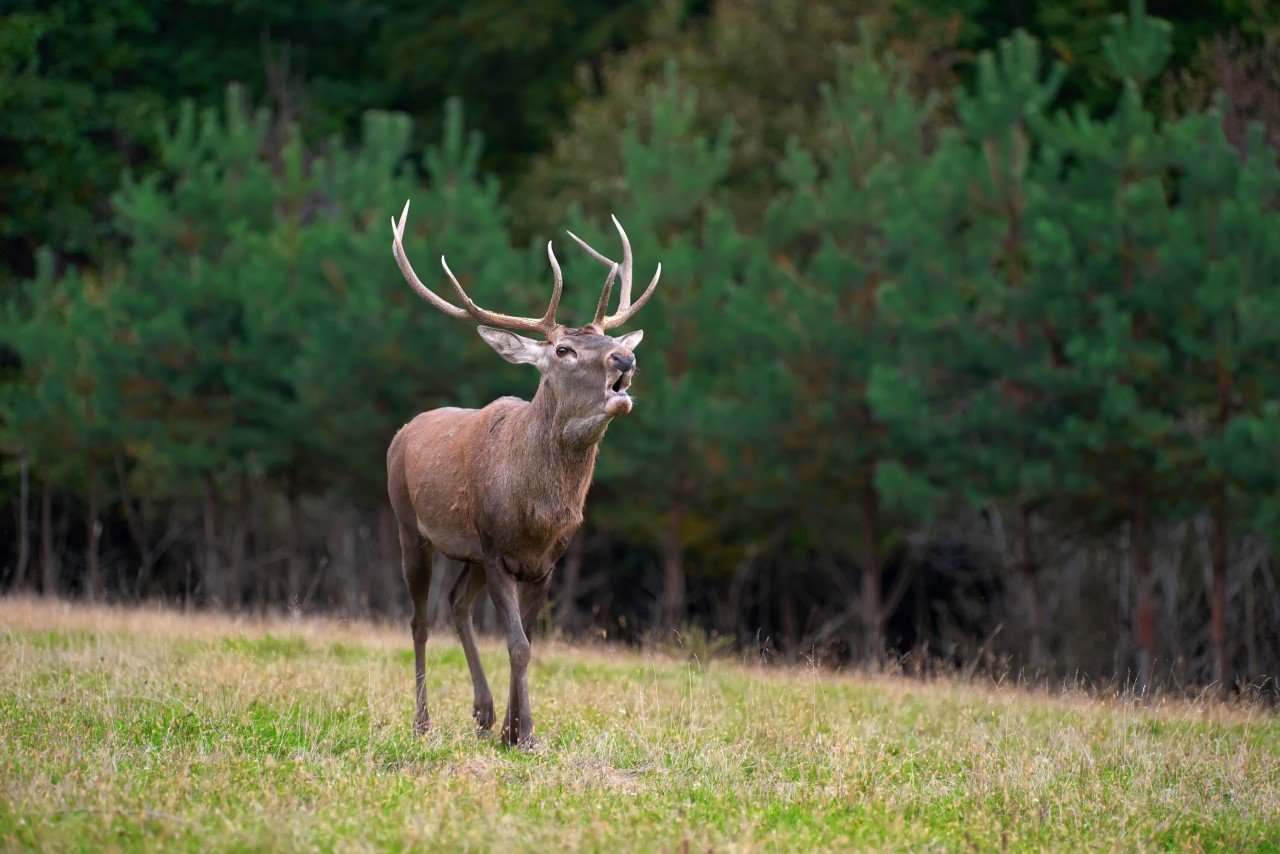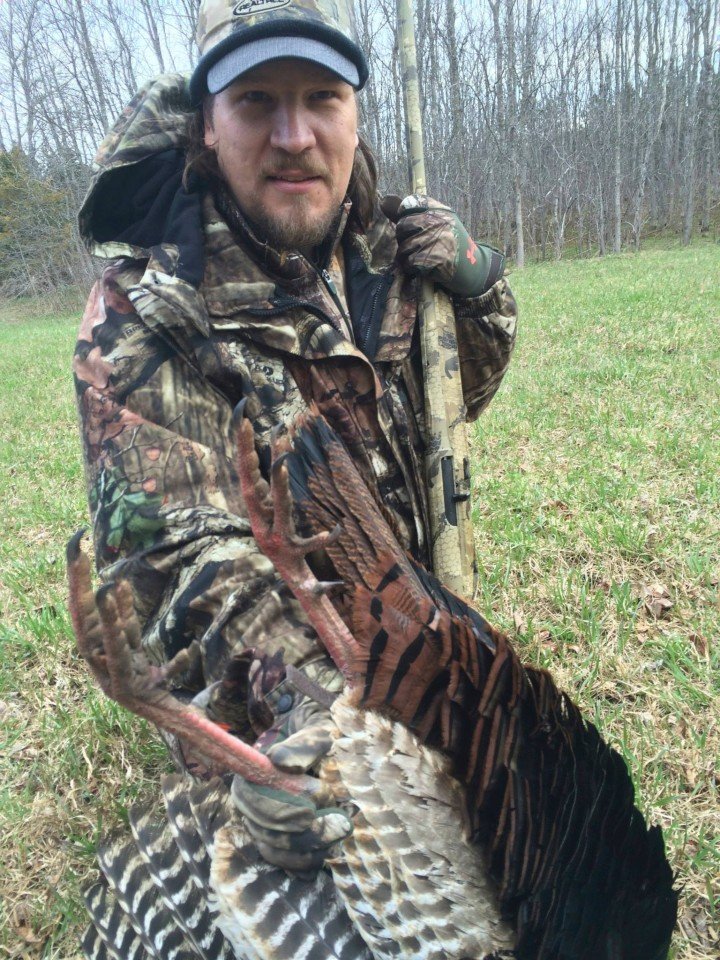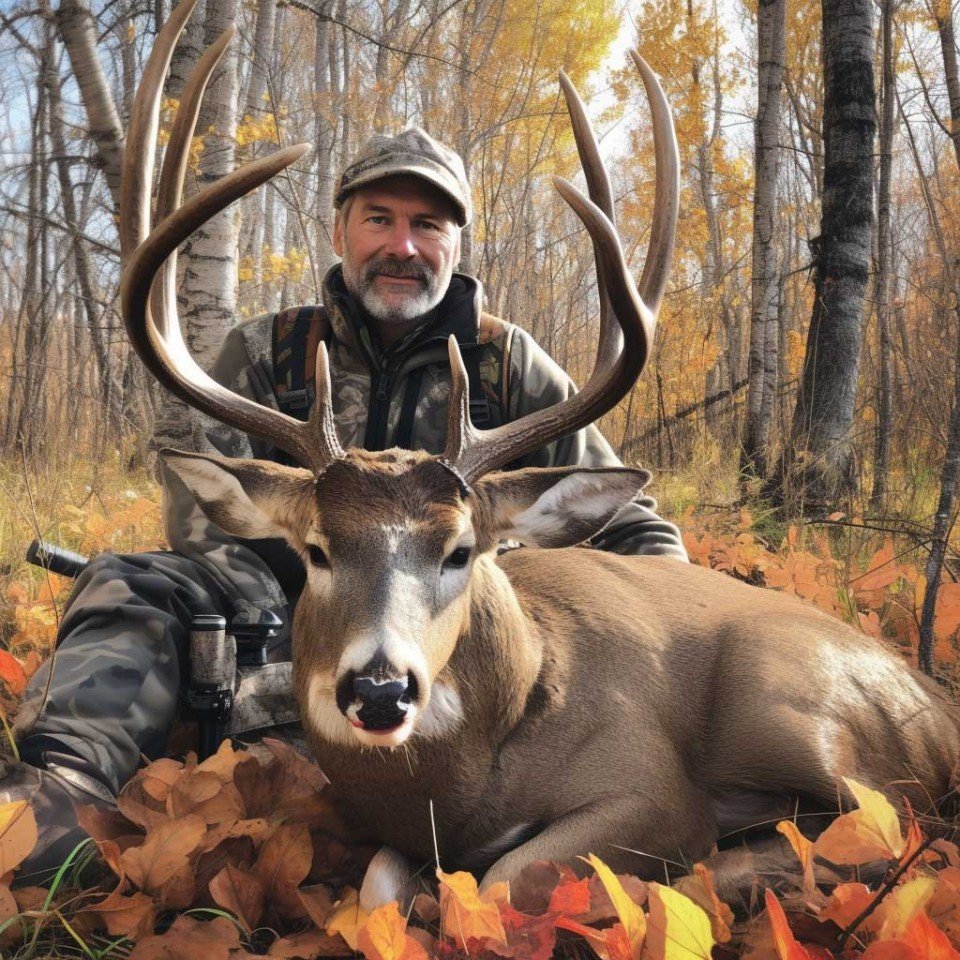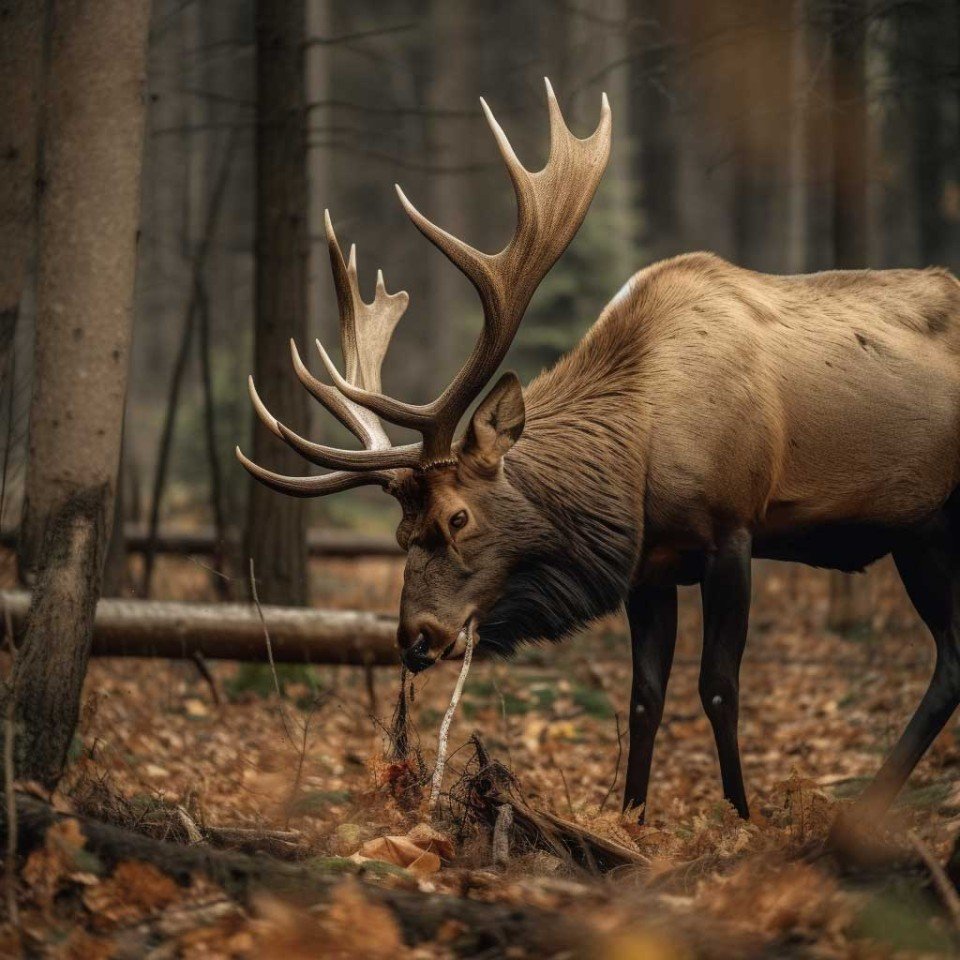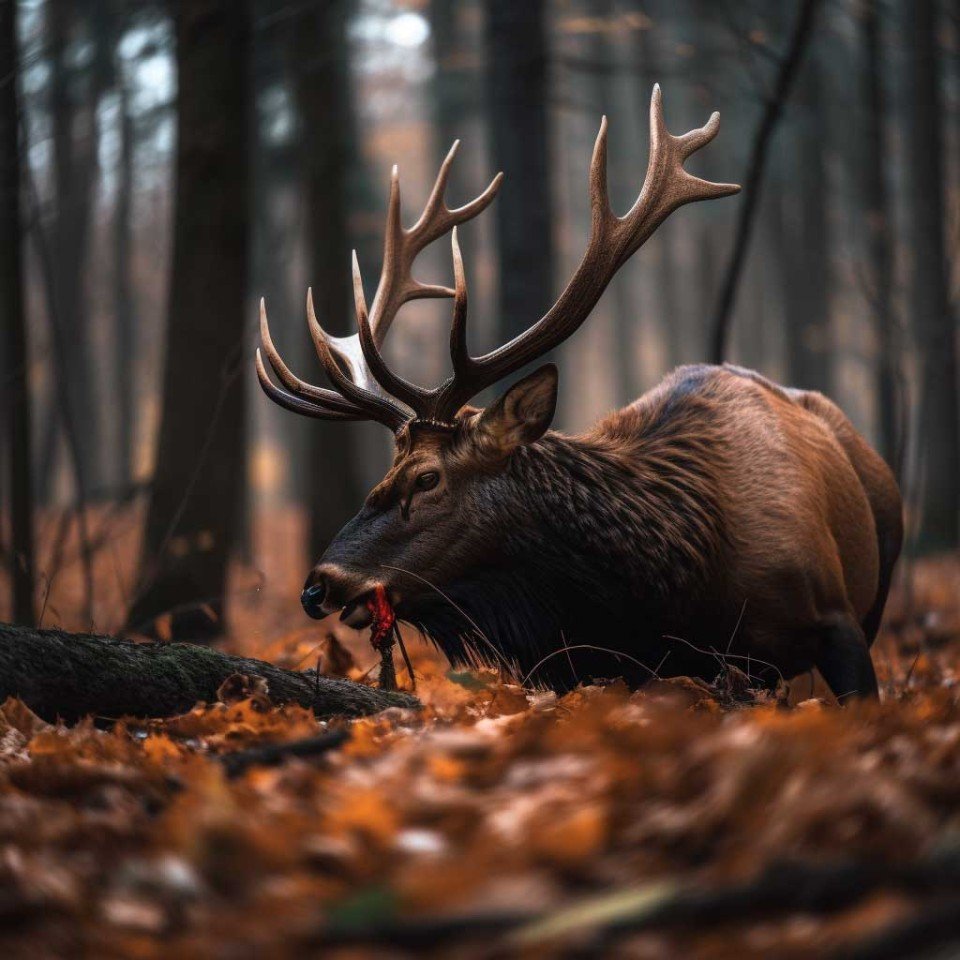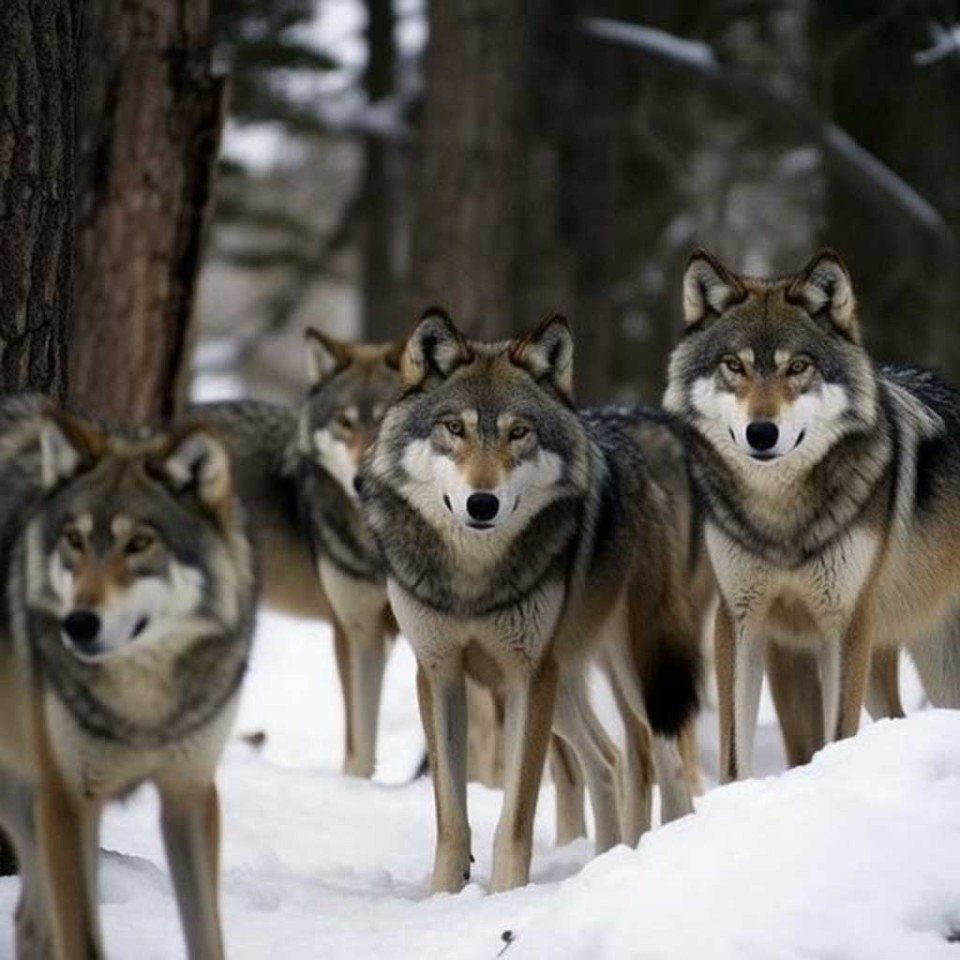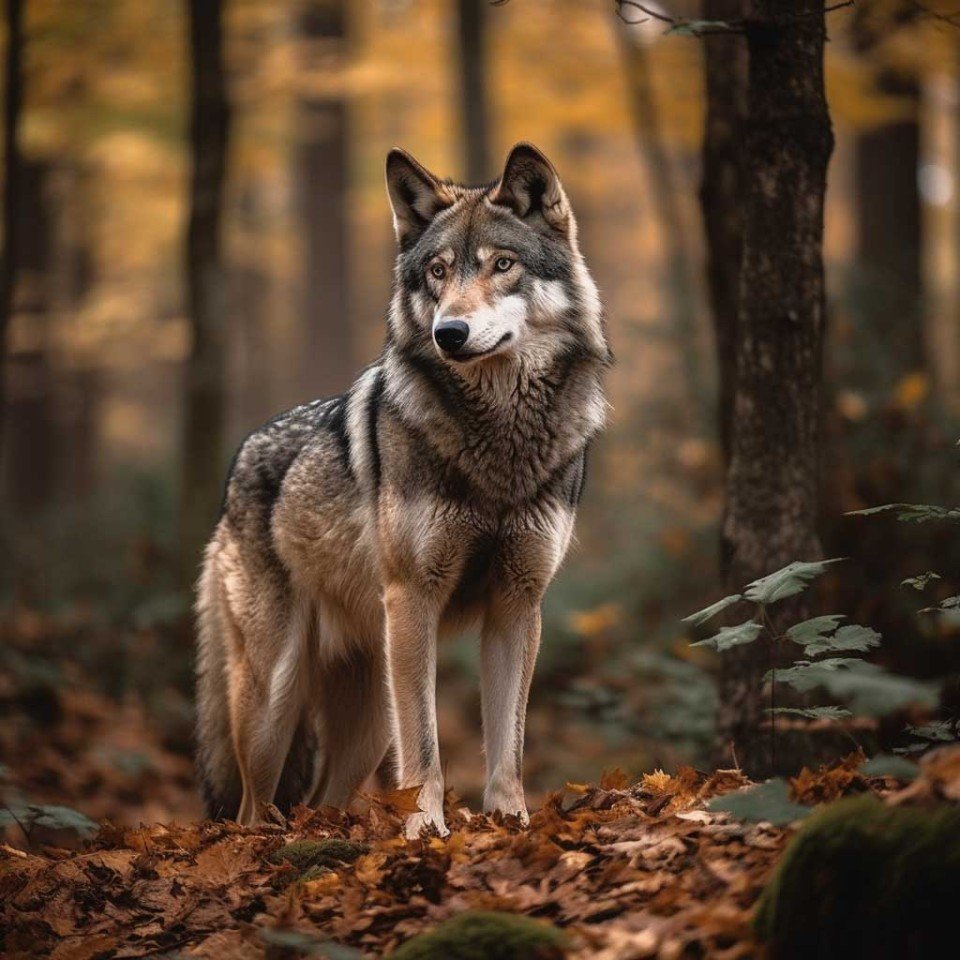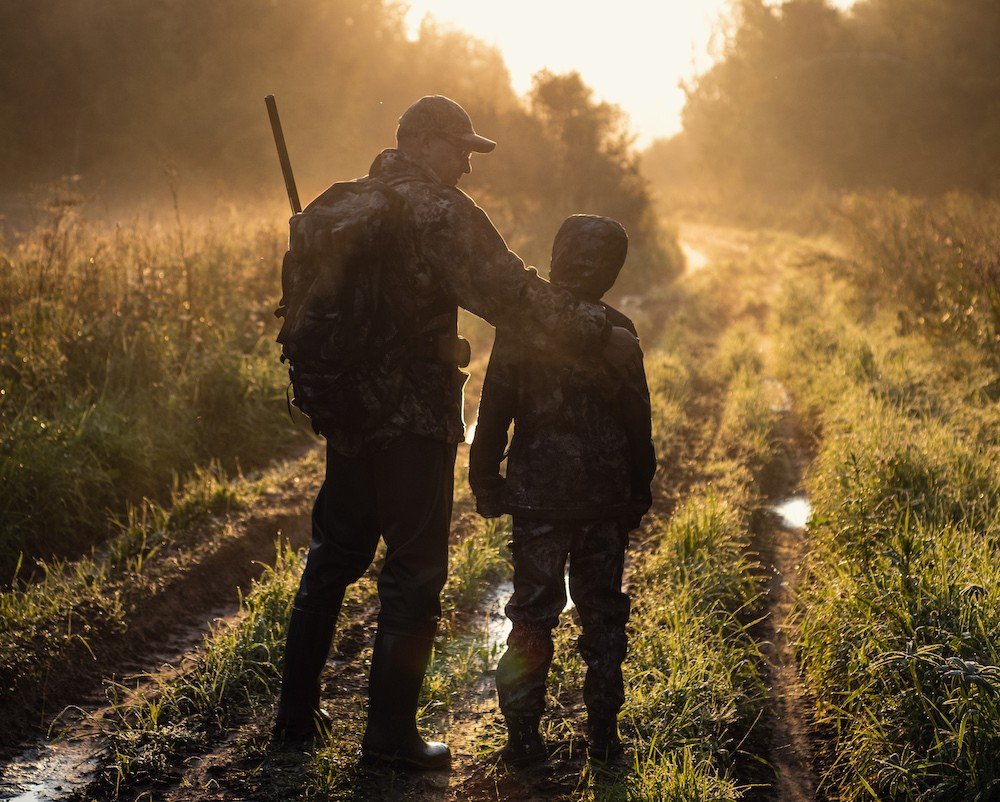When it comes to using hashtags as a hunting influencer or to connect with hunting influencers on social media platforms like Instagram, Twitter, or TikTok, it's important to select relevant ones that resonate with the hunting and outdoor community. Here are some hunting-related hashtags that can help you reach a wider audience and connect with lik...
Hunting and Fishing News & Blog Articles
Hunting is a popular outdoor activity in Tennessee, with a diverse range of game species available throughout the state. Some of the most popular game species for hunting in Tennessee include white-tailed deer, wild turkey, black bear, waterfowl, and small game such as squirrel and rabbit. To hunt legally in Tennessee, hunters must obtain a hunting...
Teddy Roosevelt was an avid hunter and he had many exciting hunting stories. Here are a few of them: In 1885, Roosevelt went on a bison hunting trip to the Badlands of North Dakota. He tracked down a bison on horseback and shot it with his Winchester rifle. The bison charged at him, and he fired two more shots before the animal fell to the gr...
Marketing a hunting outfitter company can be challenging, but there are several strategies that can help you reach potential customers and grow your business. Here are some tips for marketing your hunting outfitter company: Build a website: Having a website is crucial for any business, and it's a great way to showcase your services, pricing, and cu...
I just read a very disturbing news article. Thanks to the article by author and rancher Cat Urbigkit in Cowboy State Daily, I’m able to pass along this information to help spread the word of very dangerous undertakings and games being played by the Federal Government and anti-hunting groups.
We’ve all heard the rumors of agendas to create “Buffalo Commons” or wide-ranging and connected bison herds in America again. Well, it isn’t just rumor.
According to the Cowboy State Daily, “A federal Bison Working Group will consist of the National Park Service, Fish and Wildlife Service, Bureau of Indian Affairs and Bureau of Land Management, and the Geological Survey. This group will work on a strategy to “identify optimal approaches for populating new, healthy herds of wild bison” and “because most bison on Federal lands live in relatively small, isolated, range-restricted herds,” the new plan will focus on “managing these populations as one single connected population.” The executive order mandates completion of the draft plan by the end of this year.”
The funding proposal behind this is real, too, to the tune of $25 million from the Inflation Reduction Act funds!!! And did you notice that ranchers and private landowners weren’t included in the list of those with a seat at the table?
STOP THE INSANITY!!!!
Spring is upon us, and for many hunters, that means it's time to dust off the camo gear and grab the turkey calls. Wild turkey hunting season is one of the most anticipated times of the year for many outdoor enthusiasts, and it's easy to see why. From the thrill of the chase to the satisfaction of a successful hunt, turkey hunting is a sport like n...
Photo Credit: pexels-brett-sayles
Game and Fish is considering postponing the May 1 shed season this year. Winter conditions in Wyoming are unlike anything we’ve seen in 30 years and big game animals are struggling. Winter has lasted a long time and most of the state has well over 100% of objectives when it comes to snowpack. Jackson is currently sitting at 119%. The annual shed hunting season around the Jackson refuge historically begins May 1st. That may change this year as we are experiencing January-like weather and we’re well into April. Wyoming Game and Fish Director Brian Nesvik said, “if snow conditions and animal location create an impact for wintering big game that’s already been suffering large losses this winter, postponing the 2023 shed antler hunt would be a serious consideration.”
So there you have it, it is a possibility but we are still a month out. With snow forecasted in much of the West currently, the wrath of old man winter is holding on strong. Temperatures in much of Wyoming are forecasted to be in the 50s and 60s next week so perhaps we are finally headed in the right direction. As long as it doesn’t get too warm too fast we won’t have too much of a problem with flooding in the coming weeks, we hope.
As for those antlers? Well, I’m thinking more animals surviving winter and late-spring to create little ones is more important. How bout you?
Source Link
https://buckrail.com/game-and-fish-may-postpone-shed-antler-hunt/
Across much of the western portions of the Colorado Rockies, and especially the northwest corner of Colorado, this winter’s snowfall is significantly above average … and winter isn’t over yet. The National Weather Service’s Maybell weather station has recorded over 80 inches of snow for the area and it’s just as bad, and in many cases worse, in most of Wyoming.
Colorado Parks and Wildlife, Northwest Region Public Information Officer, Rachael Gonzales just posted an article stating, “…prolonged snow combined with strong gusty winds have made an already hard time of year for wildlife even more difficult. Food has been extremely difficult for big game to find as much of it is covered by deep, hard-packed snow. This has forced thousands of animals to migrate farther west than they typically do, burning much-needed fat and calories they likely won’t replenish.”
“It’s tough,” said Assistant Area Wildlife Manager Mike Swaro. “There’s no other way to describe it. We typically see some mortality from starvation every winter. That’s just nature, not every animal survives. This year it feels like all we’re seeing is starving or dying animals.”
This winter has been very tough for big game in the Bears Ears and White River deer and elk herds, and exceptionally tough for the Great Divide pronghorn herds. In an area known for some of the largest elk herds in the nation, severe winter conditions have resulted in high elk calf mortality and above-average cow mortality. For deer, the combination of severe winter conditions and high prevalence of chronic wasting disease has affected the resiliency of this population. Over the past several years, biologists have observed a decrease in population and the sex ratio has fallen below the objective set in the Deer Herd Management Plan.
Pronghorn are seeing severe impacts this winter and significant mortality is being observed from aerial and on-the-ground observations. With extreme winter conditions persisting through March, pronghorn mortality continues to increase. Poor winter habitat conditions and little to no food sources have led to higher-than-normal mortality rates.
Photo credit: NoName_13_Pixaby
“He told us he was unable to get his dog to come back to him. He appeared very upset and stated he didn’t know why his dog would do something like this.”
A Jackson, Wyoming man lost control of his pet Husky early this week and the dog severely mauled two mule deer. This led to the dog being shot and killed by local authorities. It has been noted that while this is accepted practice for the protection of big game animals in Wyoming it is not commonly done and killing the Husky was not the officer’s first resort.
This instance serves as a stark reminder that dogs are predatory animals at their cores, carnivores whom, if given the opportunity, will gladly and wantonly kill for the pleasure of killing. The dog in question was in fact a pet and did not appear to have a history of chasing wildlife. However, there is a first time for everything.
As a dog owner this is a nightmare scenario and if you read the article in full you’ll see that the owner did everything in his power to gain control of the dog to no avail. Even the most well trained dogs can be unpredictable. Keeping our dogs on a leash or under control with an e-collar is vital to their safety and the safety of the wildlife they may encounter.
I love my dogs, as do many of you reading this. I also love wildlife. I do my utmost to mitigate any impact either my dogs or myself have on wildlife by maintaining control over them and exercising them in places where they won’t have a negative impact on wildlife. My point? Our dogs are our responsibility and we owe it to them to train them well, control them at all times and be proactive in deciding where we take them. Not all spaces are acceptable for dogs and like children, they don’t tend to make good decisions when faced with too much stimulation.
The letter below came through my email this morning. I’ll not divulge who wrote it and it was unsolicited, but it does mirror my personal views on the issue of feral horses competing with wildlife. The mule deer, elk and especially pronghorn of southern Wyoming are at a tipping point this “spring” with more big blizzards on the way as I write this.
It’s a foregone conclusion that Wyoming, northern Colorado, Utah and Idaho have suffered and will continue to see massive winter kill on ungulate herds for 2023. Unfortunately, as the below letter states, there isn’t much we can do about that in the moment. But what about giving the surviving animals every possible advantage to rebuild their numbers?
Read the below letter and feel free to pass it along to whomever you think needs to read it.
April 2, 2023
HPAI H5N1 better known as the Eurasian Avian Flu, was first reported in California in July, 2022. The disease is mostly impacting birds but can be transferred to carnivorous animals when the infected bird is ingested. To date, this virus has been found in 45 of the 58 counties in California. In December, 2022 and January, 2023, the virus was detected in two dead mountain lions in Mono County.
These detections were unique because the cats were both part of a CDFW population study and wearing GPS collars. Even more unique is these two mountain lions were related (mother/daughter). With both cats wearing GPS collars, CDFW received a mortality notification and were able to recover the remains quickly. Both cats underwent a necropsy to determine the cause of death. They determined that the cause of death was swelling of the brain (encephalitis). They also noted that the cats had lesions in the lungs which caused a buildup in fluid. They are performing more testing to rule out the possibility of co-infections, but these two findings are associated with the Avian Flu.
Although detections in carnivorous mammals aren’t widespread, CDFW is worried that the detections were so far away from the Butte County detection in a bobcat (January 2023). Mono County also had not had any detection in wild birds yet either. CDFW does not expect this virus to have a population level impact on California mountain lions, bobcats or other carnivorous mammals.
CDFW considers this a low-risk zoonotic pathogen, which means that it poses low risk of jumping from non-human animals to humans. Even with the low transmission risk to humans, the Center for Disease Control still recommends that you take protective measures if you encounter dead birds or mammals. If you run across a dead carnivorous mammal or bird and it doesn’t have obvious signs of the cause of death (I.e., shot, or hit by a car), call CDFW and report the finding. Do not handle the specimen if you can avoid it.
The post Avian Flu In California Mountain Lions appeared first on Eastmans' Official Blog | Mule Deer, Antelope, Elk Hunting and Bowhunting Magazine | Eastmans' Hunting Journals.
Manitoba is a province located in the center of Canada and is known for its vast wilderness areas, diverse wildlife, and world-class hunting opportunities. Hunting is an important tradition in Manitoba, and many locals and tourists flock to the province every year to take part in the thrilling and rewarding activity. If you're planning to hunt in M...
Ontario is home to some of the best elk hunting opportunities in North America. With its diverse landscapes, dense forests, and abundant wildlife, the province provides an ideal environment for elk to thrive. Elk hunting in Ontario is a highly-regulated sport, with strict rules and regulations in place to ensure sustainable and responsible hunting ...
A new license for wolf hunting will be introduced in Saskatchewan starting from September 1st, which non-resident outfitter big game hunters can apply for. The announcement was made on the day the provincial budget was released, which had numerous provisions for different groups and allocated funds for them as well. The decision to introduce ...
Photo Credit: Galyna_Andrushko
When people think of the old West images of weathered cowboys like Vigo Mortensen in “Hidalgo” and native tribes of horse oriented hunters roaming the desert on horseback looking for buffalo are the first thing that comes to mind. Often these memories are etched as a mural, that at one point or another, the person probably saw in a dental office or museum. Let’s call a spade a spade, the horse often makes the image what it is, and therein lies the conundrum of what we face with “wild” horses. Perception is king.
The perception and deep ties that our culture has to horses are what make managing wild horses so incredibly tough to navigate. Emotion in our current cultural state trumps reality and sound judgment and in the case we are discussing today it certainly has pervaded to the point of serious damage to ecosystems. Hunting wild horses isn’t in the cards, large scale round ups aren’t working well anymore, and mass sterilization leaves the horses in the ecosystems for many years to continue their destruction. Can you imagine the outcry from our culture from otherwise “reasonable” people who would protest a mass culling of overpopulated wild horses?
I think of an older couple who moved to Wyoming for a time to work as missionaries in our region. In their off time they took the Wild Horse Loop as often as they could to enjoy the animals and were sure to bring every relative and friend along with them. Once when I mentioned that the horse population was hurting mule deer and antelope habitat in a major way you could have heard a pin drop. I didn’t even mention that efforts were being made to bring the population down through chemical sterilization and mass herding. This couple was otherwise very pleasant to be around and honestly level-headed. However, trying to explain to them that the wild horses are part of the reason that antelope and mule deer are dying this winter wasn’t going to make sense.
This isn’t just limited to my home state of Wyoming by any means. Without going into a master’s level thesis of research I would submit that Nevada big game animals might be the ones getting the strongest kick to the guts from a population of horses that is soaring over objective. Going through Nevada’s unit and regional descriptions in February it was the same song over and over. Destruction of prime elk and mule deer habitat as wild horses roam the desert, creating the need for massive habitat restoration and replanting. Some of my contacts there told me that the horses are starting to look malnourished in some places, competing with each other for scarce food. NDOW documented this as well with reports that the horses are moving to higher elevations outcompeting even the hearty elk.
With all this doom and gloom the real question is, what do we do? Mass roundups are no longer providing the needed drops in population to keep them on the landscape without doing harm. Sterilization efforts can’t keep up and even if a young horse is sterilized they can live for decades, those of you who own horses do the math on just how much food they can consume.
Another day, another snow storm. Unless you are pushing the envelope on 80 years on this rock then this winter will probably be the worst you’ve ever seen in Wyoming. The winter conditions in the Cowboy State and others have gone from bad to worse, and now possibly even to the level of catastrophic.
A few short weeks ago we were sitting on levels not seen since the brutal winter of the mid-1980s. Now, some are saying we are knocking on the door and maybe even through the threshold of the great winter of 1949! One of the worst on record. Although we may not be at the snow levels seen in 1949, we have now passed the longest winter on record by some accounts. It seems to be more about how the snow has come and not as much about the actual snow levels that have many throughout the state very, very concerned for our wildlife populations.
Although no official statement regarding actual numbers has been made by the Game and Fish Department, very credible, on the ground, sources have reported some devastating news for Wyoming big game hunters and enthusiasts. Some areas on the western and Southern ends of the state could possibly see winter kill ratios in the neighborhood of 80% for their deer and antelope herds! Needless to say, if this turns out to be true, it would be beyond devastating for an already struggling deer herd.
The ever-famed Wyoming Range deer herd could drop below 20,000 deer, a far cry from a population that once sported over 80,000 deer. The antelope in the area are in even worse shape with a double whammy of winter kill and a rare pneumonia outbreak creating a vicious double-edged sword for the pronghorn herds in and around the Pinedale and Baggs regions.
Last night in Pinedale, the Governor of Wyoming hosted an emergency public meeting to discuss the dire situation in Wyoming. A full house was in attendance as well as a full boat of heavy hitters from the state agencies and the University. Many in attendance even offered to completely forgo the hunt altogether in Wyoming for the next year or two if it might help the situation.
New York State is known for its beautiful natural scenery and abundant wildlife, making it a popular destination for hunting trips. Here are some popular hunting trips you can take in New York: Deer Hunting: New York has a large population of white-tailed deer, making it a popular destination for deer hunting. The state offers various hunting seaso...
Photo credit: Brandon VanDyken
As I looked down at my ram laying on the shelf below us, I realized that I had finally killed a ram. The excitement and emotions got even higher as I picked my way down the cliff towards him. This was our seventh year of hunting sheep in this unit, we had blown opportunities and missed shots in past years. My buddies and I had burned all our points to hunt this unit and it was worth it. We were sheep hunting, something we had always wanted to do.
Being up in this country makes you feel small, with only the gear you can carry on your back or on the back of your buddy’s mules, which helps a lot. Either way, it requires you to bring your best. Being in shape is a must and having the right gear is helpful. None of this matters though, you first have to have a tag in your pocket. That is the biggest hurdle to sheep hunting – the tag.
Sheep hunting in recent years has become increasingly more expensive with hunts for Dall’s and Stone’s costing more than your child’s college tuition. The draw odds in states with Rocky Mountain and Desert sheep have become harder to draw than the PowerBall jackpot. However, there ARE ways to increase your chances of getting to sheep hunt.
Yes, it may still take time and will cost money. The one thing that holds true is that you have to pay to play. Whether that is in state drawings or going to events like Wild Sheep Foundation banquets and playing the raffles. It all increases your chances, and you need to start now. I want to give you ideas on how to do that and a few on what you may need to do once you have successfully acquired a tag.
A strategy I wish I had started sooner is applying in other states and getting in raffles. The Wild Sheep Foundation holds both their national show and local banquets, all of which have raffles or drawings. Your chances of winning at one of these are usually far higher than in the state draws. Even if you only buy one ticket at these, you are drastically increasing your odds of hunting.
According to the latest data available from the U.S. Fish and Wildlife Service, here are the top 5 states with the highest number of hunters: Texas - With over 1.1 million hunters, Texas has the highest number of hunters in the United States.Pennsylvania - Pennsylvania has over 940,000 hunters, making it the second highest state for hunting partici...
As Colorado nears the actual implementation of its fairy-tale wolf “reintroduction” plan, some inconvenient and ugly realities of plunging the large predator back into the mix of modern society are taking center stage. First, it seems that wolves harbor severe contempt for domestic dogs and they don’t discriminate whether the dog or dogs in question are working animals or pets; the end result? Fido loses badly.
It seems we’ve seen something similar in Colorado already this year with the cougar killing spree taking place on the state’s front range. Hmmm, I see a pattern here.
Second, in an interesting attempt to protect its beloved, transplanted wolves, Colorado is implementing a 60 mile buffer zone with the bordering states of Wyoming, Utah and New Mexico. Sixty miles? That’s laughable as young wolves or displaced wolves will travel much further than that seeking home ranges or suitable habitat. It’s also exactly how the North Park wolves responsible for killing dogs and livestock got to Colorado in the first place.
To me this attempt to provide a safe-space displays enormous ignorance on the part of Colorado FWP and is the exact same thinking that led to the wolf “reintroduction” run amuck in the Greater Yellowstone Ecosystem. Combine said ignorance with seemingly willful arrogance that they know how to manage a species that’s been vacant from the landscape for at least two generations of biologists and you’ve got the makings of a Shakespearian tragedy; Macbeth – ambition – ignorance – arrogance – disaster. . . you get the picture.
I’ll be in the back with my popcorn.

